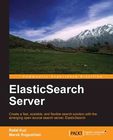Neo4J is the most popular graph database in the NoSQL databases family. We’re using it in the Nousmotards project to store all social data through nodes and relationships.
Today I am going to talk about our experience after having using it for 2 years now (take a look at directed graph if you are not really familiar with Graph Database).
1/ Our use case Nousmotards is a social network for bikers, we aim to provide valuable tools to ride, meet and share nice time with people who like motorcycling.




